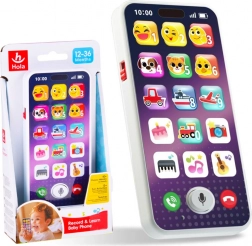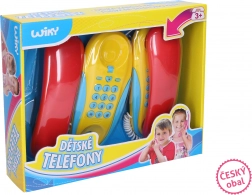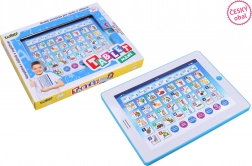In today’s world, children have embraced technology faster than anyone would have expected. Electronic toys, interactive apps, and smart games can be great tools for developing children’s creativity, logical thinking, and fine motor skills. On the other hand, it’s very important to keep a healthy balance between digital and traditional play. How do you find it, and why does it matter so much?
1. The benefits of electronic toys
- Skill development: Today’s interactive toys often teach programming, English, or recognition of shapes and colors. Games on tablets or smartphones can develop logical reasoning, spatial awareness, and hand–eye coordination. They also tend to keep children engaged for longer and encourage independent play.
- Exposure to the world of technology: Thanks to electronic games, children naturally get acquainted with modern devices, learn to operate them, and practice skills that will be increasingly important in the future.
2. Setting healthy limits
- Time limits: Clearly defined time for ‘digital play’ helps children develop other skills as well. Agree on how many minutes or hours per day or week children can spend with electronic toys.
- Content supervision: Pay attention to the child’s age and tailor your choice of toys or apps accordingly. Always review their content—it should be appropriate for the child’s developmental stage and should not contain excessive violence or advertising.
3. Why combine them with traditional toys
- Boosting imagination and creativity: Wooden building sets, board games, or art supplies create space for original ideas. The child creates stories and scenarios on their own.
- Developing physical skills: Traditional toys involve children more in the real world. They support both fine and gross motor skills, the ability to cooperate with peers, and above all, social interaction.
- Balance and well-rounded development: Children need harmonious growth—both mental (logical, language, and creative abilities) and physical (movement, motor skills, coordination). Combining electronic and traditional activities is the best path to holistic development.
4. Tips for linking tech and traditional toys
- Joint projects: Let children first create a simple building design in a tablet app (e.g., with blocks), then build it together from a construction set in the real world.
- Interactive board games: Today there are many smart board games that combine classic play with a companion app on a phone or tablet.
- Tap into creativity: Get a robotic construction kit that the child first designs and assembles, then learns to program its simple functions. You can connect it all with storytelling games so the child returns to play with enthusiasm.
Our recommendations from the online shop
- Interactive educational tablets and phones: Suitable for children who are just learning basic skills such as letters, numbers, or colors.
- Robotic toys: Great for children with bigger ambitions and an interest in technology. They develop logical thinking and technical skills.
- Smartwatches: Try getting children something you own yourself. They encourage physical activity and allow for educational games.
Electronic toys hold tremendous potential for a child’s education and development. The key is to set healthy boundaries and maintain a balanced proportion between digital and traditional play. This way, you help your child not only discover the joy of exploring modern technology, but also preserve the essential elements of creativity, imagination, and movement that are so vital to the world of childhood.
Explore our selection and check out electronic toys you can easily connect with traditional ones. Support your children’s development smartly and with love!





